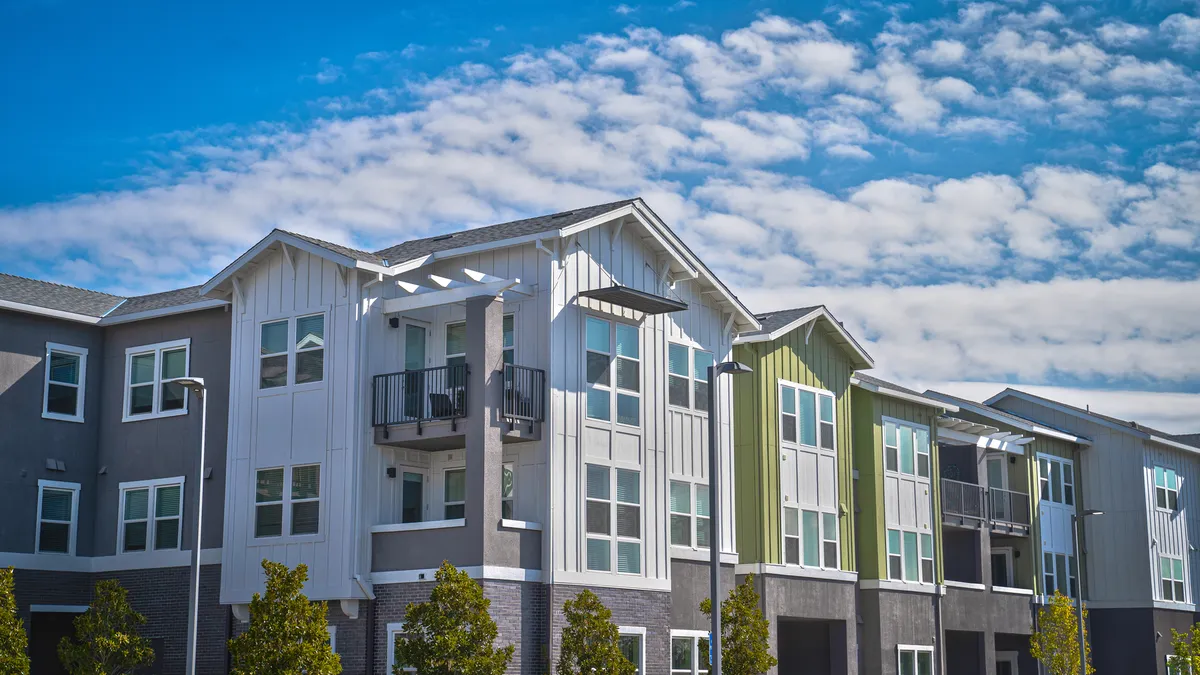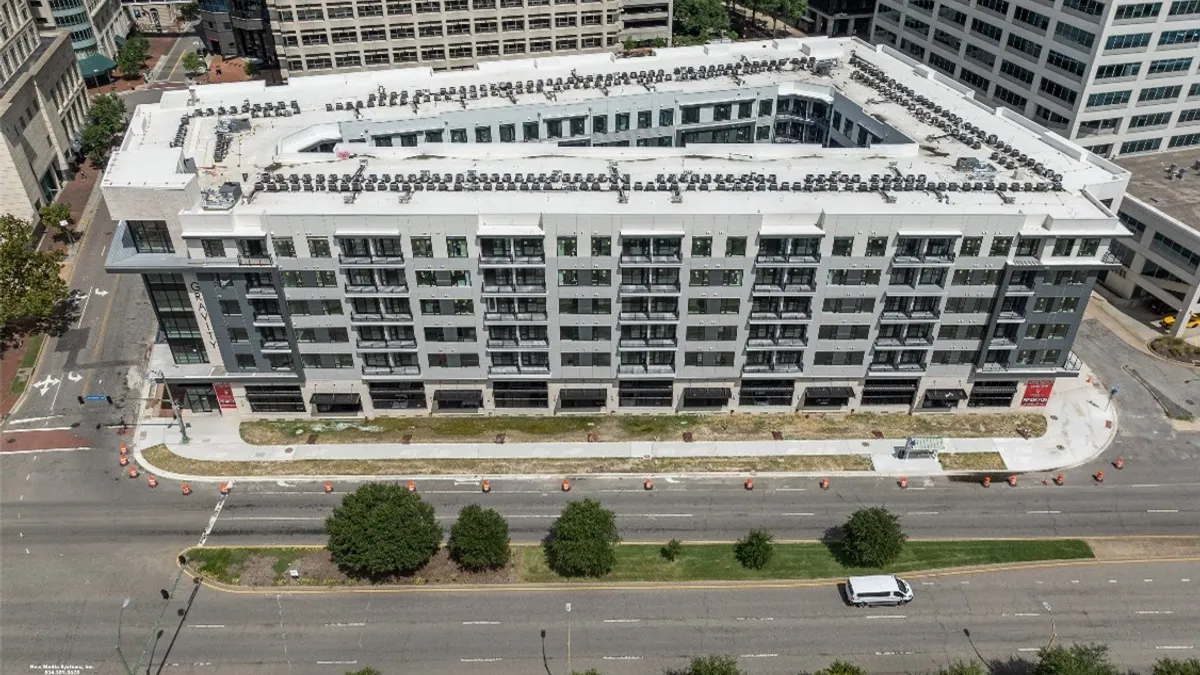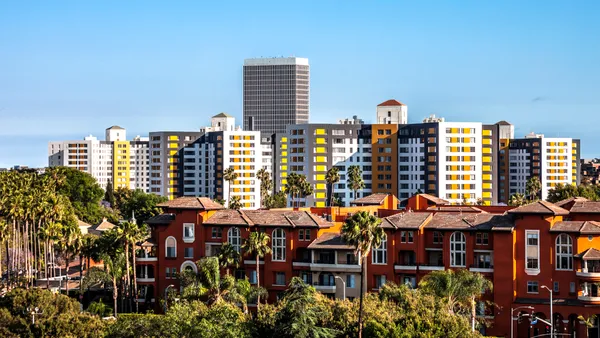The national average multifamily rent fell by $3 in October, down to $1,748, according to Yardi Matrix’s latest National Multifamily Report. Year-over-year rent growth was unchanged from the previous month at 0.9%; Yardi notes that the growth rate has fluctuated between 0.7% and 0.9% since January.
The market has absorbed 329,000 new units so far this year, but new unit supply is trending ahead of demand, with 554,000 market rate deliveries expected in 2024. Occupancy fell 10 basis points in September, down to 94.7%. (Occupancy numbers are current to the previous month.)
While supply growth is strong in the short term, deliveries are expected to drop in 2026 and 2027 following a drop in starts this year. Lower supply should boost rent growth, but has the potential to exacerbate the country’s growing housing supply shortage and affordability problems, according to Yardi.
Rent growth trends in the top 30 metros are still heavily dependent on regional supply patterns. The top 11 metros are all located in the Northeast, Mid-Atlantic and Midwest regions, which have gotten a smaller share of new units this year, while the bottom nine are in the Southeast and Southwest, where deliveries are high.
| Market | YOY rent growth, October 2024 | YOY rent growth, September 2024 | Difference |
|---|---|---|---|
| New York City | 5.3% | 5.4% | -0.1 |
| Detroit | 3.7% | 3.0% | 0.7 |
| Kansas City, Missouri | 3.7% | 4.2% | -0.5 |
| Washington, D.C. | 3.2% | 3.1% | 0.1 |
| Columbus, Ohio | 3.1% | 2.8% | 0.3 |
| Indianapolis | 3.0% | 3.3% | -0.3 |
| Chicago | 2.9% | 2.4% | 0.5 |
| New Jersey | 2.9% | 2.8% | 0.1 |
| Boston | 2.8% | 3.4% | -0.6 |
| Philadelphia | 2.2% | 1.9% | 0.3 |
SOURCE: Yardi Matrix
Single-family rents fell by $8 in October, down to $2,164 — the sector’s worst performance in years, according to Yardi. YOY rent growth fell 30 basis points to 0.3%, and occupancy fell 10 basis points to 95.1% in September.
A new paradigm
While the report’s authors consider it too soon to forecast specific policy changes under the new Trump administration, many of his proposals have the potential to impact multifamily housing.
For instance, President-elect Donald Trump’s promise to increase tariffs could have an upward impact on inflation. The 10-year Treasury rate rose by 20 basis points to 4.45% the day after his election.
In addition, Trump has spoken of conducting a mass deportation of undocumented immigrants. The report notes that immigration as a whole has been a large driver of multifamily demand in recent years.
The incoming administration claims this move would reduce demand and upward pressure on housing costs, according to NPR. However, economists told NPR that immigration actually has a relatively small effect on housing costs, and that a mass deportation would remove many workers from the construction labor pool, making new housing more expensive to build.











